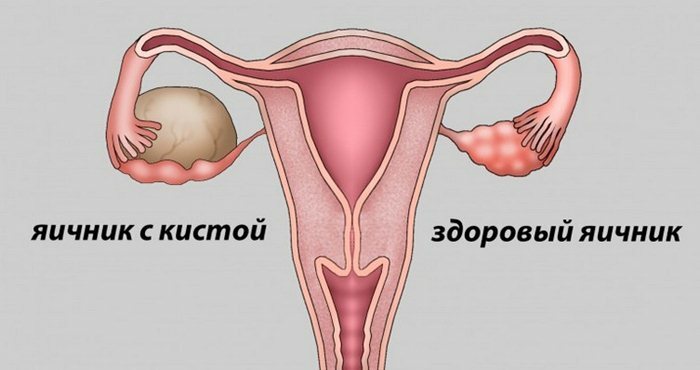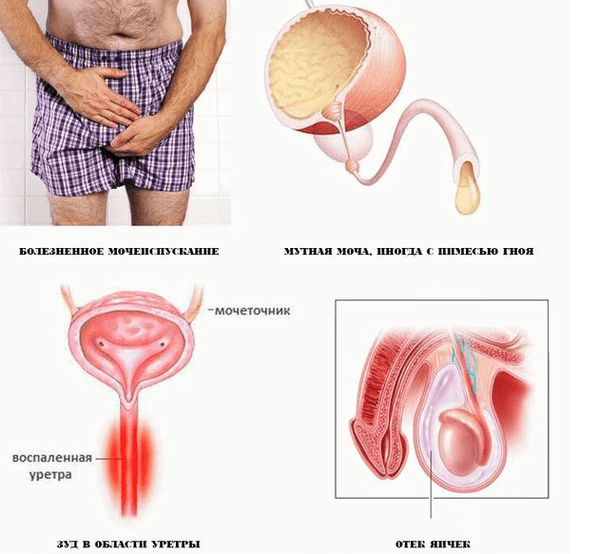Amenorrhea: what is it, causes, symptoms, treatment in women
In this article we will tell you what Amenorrhea is, the causes of its occurrence, what symptoms it is accompanied by and what methods of treatment can be used.
Amenorrhea means no menses or periods.
There are two types of amenorrhea: primary and secondary. When a girl reaches 16 years of age and does not have a period, she may have primary amenorrhea. When a woman who has periods but misses them three times in a row, she has secondary amenorrhea.
Amenorrhea occurs under certain circumstances, including during pregnancy, lactation (lactational amenorrhea), and menopause. Secondary amenorrhea is more common than primary amenorrhea.
Amenorrhea is a symptom of a condition other than the disease itself. Many things can cause this phenomenon, including body weight, hormonal disruptions in women, stress and problems with the pituitary gland. Usually the main condition is not serious.
Content
- Signs and symptoms
- What Causes Amenorrhea?
- Diagnostics
- Treatment options for Amenorrhea
- Medications
- Complementary and alternative treatments
- Nutrition and Supplements
- Herbs
- Homeopathy
- Physical therapy
- Acupuncture
- Video
Signs and symptoms
Symptoms of primary amenorrhea may include:
- Headache;
- High blood pressure;
- Vision problems;
- Acne;
- Unwanted hair growth.
Symptoms of secondary amenorrhea may include:
- Nausea;
- Swollen breasts;
- Headache;
- Vision problems;
- Exhaustion with thirst;
- Thyrotoxicosis (enlarged thyroid gland);
- Darkening of the skin.
Mood swings, depression, and vaginal dryness are common with estrogen deficiency (female steroid hormones).
What Causes Amenorrhea?

The cause of both primary and secondary amenorrhea can be a few reasons.
Primary amenorrhea
- Lack of reproductive organs such as the uterus, cervix, or vagina;
- Pituitary gland problems;
- Anorexia;
- Stress;
- Too much physical activity;
- Abnormal chromosomes
- Malnutrition.
Secondary amenorrhea
- Pregnancy or breastfeeding;
- Polycystic ovaries;
- The use of several types of contraceptives at once;
- Taking certain medications such as corticosteroids
- Hormonal imbalance;
- Anorexia;
- Physical exercise;
- Thyroid problems;
- Tumor of the pituitary gland;
- Stress;
- Premature menopause (menopause before age 40);
- Malnutrition;
- Autoimmune diseases (lupus, vasculitis, myasthenia gravis, autoimmune thyroiditis etc.) .
Diagnostics
Your doctor may ask you to have a pregnancy test and then have a physical exam. The doctor may also order lab tests to check hormone levels and find out how well the thyroid is working. Other additional diagnostic measures may include:
- computed tomography (CT);
- magnetic resonance imaging (MRI);
- Ultrasound.
Read also:Cyst on the ovary: what causes it in women, treatment
Treatment options for Amenorrhea

Doctors will determine which treatment is right for you because of your amenorrhea. Treatment includes hormone therapy, psychological counseling and support, as well as surgery and others.
Medications
Doctors may suggest the following medications:
- Birth control pills or hormonal medications to help induce menstruation.
- Increase low estrogen levels caused by ovarian problems, hysterectomy, or menopause. Women with an intact uterus should receive estrogen plus progesterone. Estrogen or hormone replacement therapy (HRT) has both benefits and risks. Postmenopausal women who follow HRT have a higher risk of developing breast cancer. stroke, cardiovascular disease and pulmonary embolism. However, for some young women, the benefits may outweigh the risks. Talk to your doctor to decide what is best for you.
- Progesterone for treatment ovarian cysts in women and some other pathologies associated with the uterus.
- Metformin for the treatment of cysts in the ovaries and the absence of ovulation.
Complementary and alternative treatments
Nutrition and Supplements
Be sure to eat a healthy diet.
Limit processed foods, eat heart-healthy foods, eat unsaturated fats, and avoid caffeine and alcohol.
Eat more whole grains, vegetables, and omega-3 fatty acids, which are found in fish, nuts, and seeds.
Diets very low in unsaturated fat may increase the risk of amenorrhea. In addition, the following supplements may help:
- Calcium, potassium and magnesium, vitamin D, vitamin K and boron. Women who don't have periods are at a higher risk of osteoporosis, and these vitamins and minerals can help keep bones strong. Vitamin K may interact with blood thinners medications such as warfarin (Coumadin) and clopidogrel.
- Vitamin B6 can reduce high prolactin levels in women. Prolactin is a hormone released by the pituitary gland, and women with amenorrhea often have more high prolactin levels.
- Essential Fatty Acids: Evening primrose oil or borage oil. These fatty acids can increase your risk of bleeding, especially if you are taking blood-thinning medications such as clopidogrel or warfarin.
Read also:Adhesions in the small pelvis: all about the adhesion process (causes, symptoms and treatment)
Progesterone is sometimes available as an oral anti-contraceptive supplement. However, you should never take progesterone without consulting your doctor.
Herbs
Most of the herbs listed below have not been specifically studied to treat amenorrhea, but they have traditionally been used.
Many act as an estrogen hormone in the body.
Talk to your doctor before taking them and avoid these herbs if you or your family have have a history of estrogen related cancers, including breast, cervical, and ovaries.
- Sacred Vitex: with high prolactin levels, sacred vitex can help the pituitary gland function normally and reduce prolactin levels, but must be taken for 12-18 months. One very small study found that 10 out of 15 women with amenorrhea started menstruating after taking Vitex sacred within 6 months. If you are already using hormone therapy, do not use sacred vitex except under the supervision of your doctor. It may interact with certain medications, including chlorpromazine (thorazine), haloperidol, levodopa, metoclopramide, olanzapine (zipraxa), prochlorperazine (compazine), quetiapine (seroquel), ropinirole, and risperidone (risperdal) which can also reduce the effectiveness of birth control pills.
The following herbs have estrogen-like effects and are sometimes used to treat menopausal symptoms, although there are no clinical trials to prove their effectiveness.
People with a history of hormonal cancers should consult a doctor before using these herbs:
- Black cohosh racemose (Branched cimicifuga), Licorice (Liquorice) andMichella wavy (Mitchella repens): Black cohosh can interact with a number of drugs, including acetaminophen (Tylenol), atorvastatin (Lipitor), carbamazepine (Tegretol), isoniazid, methotrexate, and others. Licorice interacts with many medications are both prescription and over-the-counter and can potentially cause many side effects, so talk to your doctor before taking it. DO NOT take licorice if you have high blood pressure or heart failure.
- Common cuff and Verbena officinalis: These herbs can help stimulate menstrual flow. DO NOT take these herbs without consulting your doctor.
- Northern Kelp, Sowing oats and Field horsetail: These three are rich in minerals that can help promote thyroid function. Avoid horsetail if you have diabetes, are taking lithium, or are taking diuretics.
Read also:Uterine bleeding: causes, symptoms, types, first aid and treatment
Do NOT take Black Cohosh herb, it is toxic and should not be used without strict medical supervision.
Homeopathy
Few studies have examined the effectiveness of specific homeopathic remedies. Professional homeopaths, however, may recommend treatment for amenorrhea based on their knowledge and clinical experience. Before prescribing a medicine, homeopaths take into account the constitutional type of a person.
- Pulsatilla: for most menstrual problems, especially in women with poor appetite and unable to withstand stress;
- Sepia: for women with late or irregular menstruation;
- Graphite: for women with late or light periods.
Physical therapy
The following methods increase circulation and relieve pain:
- Castor oil: Apply oil to a soft, clean cloth, place on belly and cover with plastic wrap. Place a hot water bottle or heating pad on top of the package and let it sit on your stomach for 30-60 minutes. You can safely use this treatment for 3 days, although it may be beneficial in the future..
- Contrast baths: use two tubs that you can sit comfortably in. You will need to first sit in hot water for 3 minutes, then in cold water for 1 minute. Repeat this procedure 3 times to close the first step of the entire procedure. Do 1 to 2 treatments a day, 3 to 4 days a week.
Acupuncture
Acupuncture can improve hormonal imbalances that can coexist with amenorrhea and related conditions such as polycystic ovary syndrome (PCOS).
Several small studies on women with fertility problems that have sometimes been associated with amenorrhea suggest that acupuncture can promote ovulation.
Acupuncturists treat people with amenorrhea based on an individual assessment of the excess and deficiency of qi located in different meridians.
Acupuncturists believe that amenorrhea is often associated with liver and kidney problems, and treatment often focuses on enhancing function in these areas.



